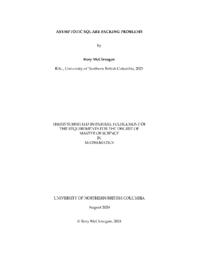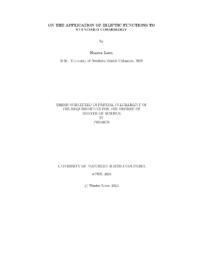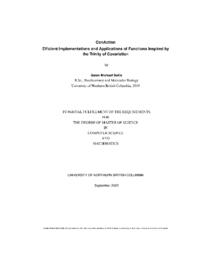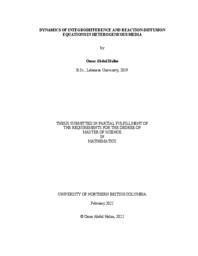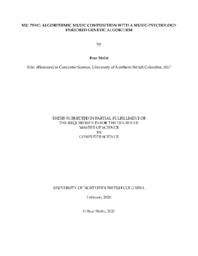El Smaily, Mohammad
Person Preferred Name
Mohammad El Smaily
Related Works
Content type
Digital Document
Description / Synopsis
This thesis provides generalization to known solutions for the scale factor and cosmic time of Friedmann-Lemaître-Robertson-Walker model universes in terms of elliptic functions. In particular the integration of known expressions for the scale factor is used to find new expressions for cosmic time. Various techniques using both the Weierstrass and Jacobi functions are discussed. Plots of physically significant quantities such as redshift and redshift drift are given. Limiting cases provide context for how various cosmic fluids change the dynamics of the universe on the largest scales.
Origin Information
Content type
Digital Document
Description / Synopsis
Complexity poses a pervasive challenge in understanding formal and natural systems which can arise from a combination of a system's state and state transition rules. In situations in which many aspects of a system are changing together, it is desirable to quantify how much they do so. We motivate and define five mathematical functions that can be used to quantify coordinated changes in structure. We also developed ConAction, a Python package which implements these novel mathematical tools in a way that is performant, easy to install, and easy to use. These new tools can be applied to real research problems, which we exemplified by evaluating a classic isolation by distance model for Dendroctonus ponderosae populations in western North America
Origin Information
Content type
Digital Document
Description / Synopsis
In this work, we study two different models that appear in population dynamics. The first problem is concerned with an integral equation that models discrete time dynamics of a population in a patchy landscape. The patches in the domain are reflected through the discontinuity of the kernel of the integral operator at a finite number of points in the whole domain. We prove the existence and uniqueness of a stationary state under certain assumptions on the principal eigenvalue of the linearized integral operator and the growth term as well. We also derive criteria under which the population undergoes extinction (in which case the stationary solution is 0 everywhere). In the second problem we consider a reaction-diffusion model with a drift term in a bounded domain. Given a time T, we prove the existence and uniqueness of an initial datum that maximizes the total mass [equation] in the presence of an advection term. In a population dynamics context, this optimal initial datum can be understood as the best distribution of the initial population that leads to a maximal the total population at a prefixed time T. We also compare the total masses at a time T in two cases: depending on whether an advection term is present in the medium or not. We prove that the presence of a large enough advection enhances the total mass.
Origin Information
Content type
Digital Document
Description / Synopsis
Recent advancement of artificial intelligence (AI) techniques have impacted the field of algorithmic music composition, and that has been evidenced by live concert performances wherein the audience reportedly often could not tell whether music was composed by machine or by human. Among the various AI techniques, genetic algorithms dominate the field due to their suitability for both creativity and optimization. Many attempts have been made to incorporate rules from traditional music theory to design and automate genetic algorithms. Another popular approach is to incorporate statistical or mathematical measures of fitness. However, these rules and measures are rarely tested for their validity. This thesis is aimed at addressing the above limitation and hence paving the way to advance the field towards composing human-quality music. The basic idea is to look beyond this constrained set of traditional music rules and statistical/mathematical methods towards a more concrete foundation. We look to a field at the intersection of musicology and psychology, referred to as music-psychology. To demonstrate our proposed approach, we implemented a genetic algorithm exclusively using rules found in music-psychology. An online survey was conducted testing the quality of our algorithm’s output compositions. Moreover, algorithm performance was analyzed by experimental study. The initial results are encouraging and warrant further research. The societal implications of our work and other research in the field are also discussed.
Origin Information

